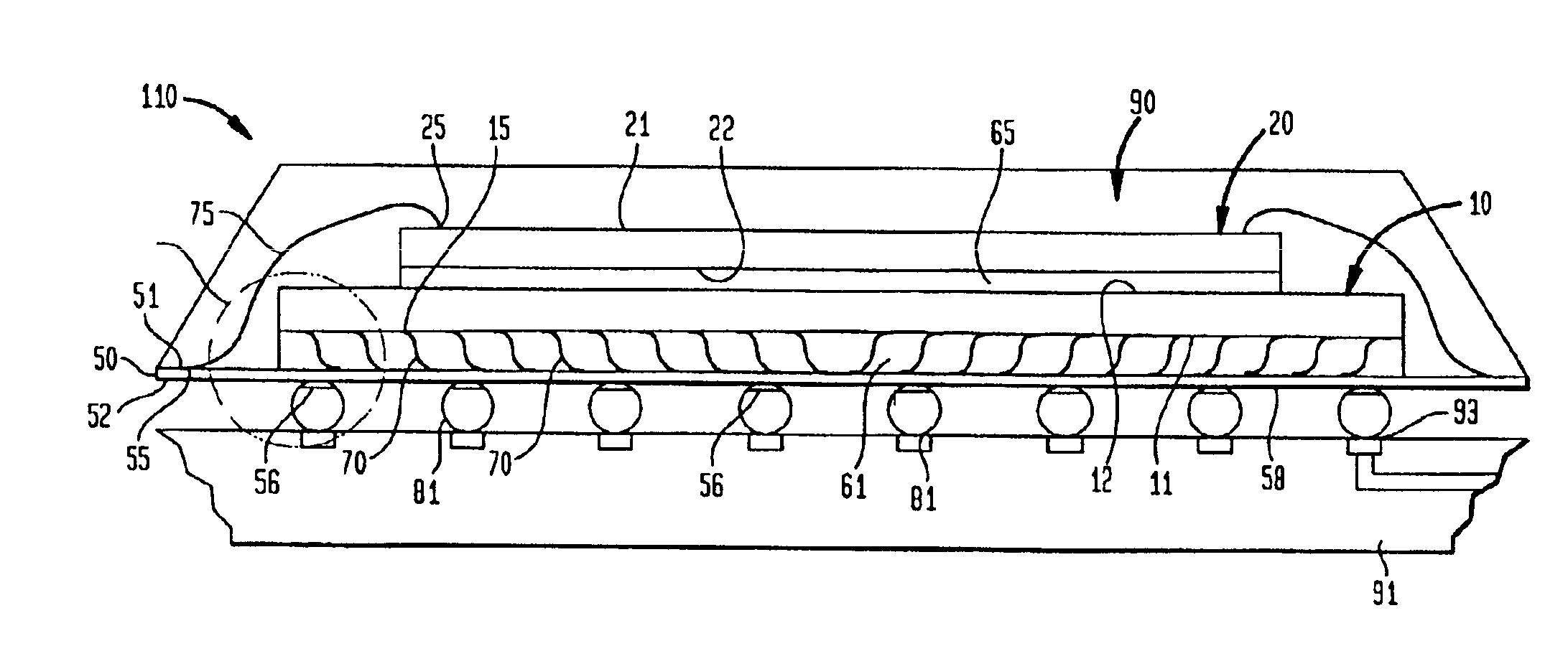Stacked microelectronic assemblies and methods of making same
a microelectronic assembly and stacking technology, applied in the direction of printed circuits, semiconductor devices, semiconductor/solid-state device details, etc., can solve the problems of chip dissipation of electrical power, cost and reliability problems, and the approach offers only limited reduction of the aggregate area of the circuit panel occupied, so as to facilitate the testing of individual subassemblies and compact structure
- Summary
- Abstract
- Description
- Claims
- Application Information
AI Technical Summary
Benefits of technology
Problems solved by technology
Method used
Image
Examples
Embodiment Construction
[0028]As shown in FIG. 1, a stacked microelectronic assembly 110 according to one embodiment of the present invention includes a first microelectronic element 10 and a second microelectronic element 20. Microelectronic element 10 has a face surface 11 and a back surface 12 opposite the face surface. Electrical contacts 15 are exposed on face surface 11. Microelectronic element 20 is arranged similarly to microelectronic element 10, in that it has face surface 21, a back surface 22 opposite the face surface and electrical contacts 25 are exposed on face surface 21. In the embodiment of FIG. 1, each microelectronic element 10 and 20 is a conventional semiconductor chip. The contacts 15 on the first microelectronic element are disposed in a “area array” or array of contacts at substantially equal distances over the area of face surface 11, whereas the contacts 25 are disposed in two rows adjacent opposite edges of such surface.
[0029]The assembly also includes a dielectric element 50 ha...
PUM
 Login to View More
Login to View More Abstract
Description
Claims
Application Information
 Login to View More
Login to View More - R&D
- Intellectual Property
- Life Sciences
- Materials
- Tech Scout
- Unparalleled Data Quality
- Higher Quality Content
- 60% Fewer Hallucinations
Browse by: Latest US Patents, China's latest patents, Technical Efficacy Thesaurus, Application Domain, Technology Topic, Popular Technical Reports.
© 2025 PatSnap. All rights reserved.Legal|Privacy policy|Modern Slavery Act Transparency Statement|Sitemap|About US| Contact US: help@patsnap.com



